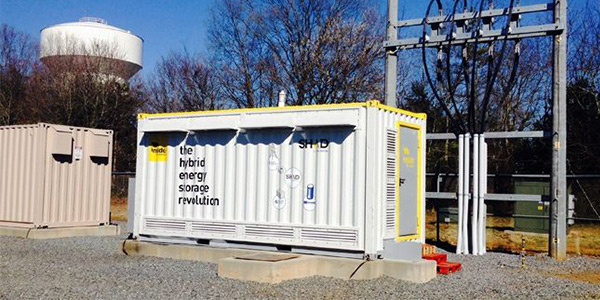FERC will hold a technical conference July 23 on the “technical and market issues” raised by the growth of hybrid generation and storage resources.
FERC said the conference will run from 9 a.m. to 5 p.m. ET and will be held either in person at commission headquarters at 888 First St. NE, Washington, DC 20426 (with a WebEx option available) or solely via teleconference if necessary due to the coronavirus pandemic.
The commission will issue a supplemental notice before the conference with the agenda and a decision on the venue.
Those interested in participating as panelists must submit a nomination form by 5 p.m. May 15. Individuals can register to attend at https://www.ferc.gov/whats-new/registration/07-23-20-form.asp.
More information is available from Kaitlin Johnson (202-502-8542) for technical questions and Sarah McKinley (202-502-8368) for logistical issues.
Commissioners may participate in the conference.
Commissioner Richard Glick called for a technical conference on hybrids at the Energy Storage Association’s annual Policy Forum in February. Among the questions the commission needs to answer, he said, are how the addition of storage to an existing solar or wind project affects its position in interconnection queues and whether it is treated as a dispatchable or intermittent resource. “We need to learn what some of these issues are — what some of the barriers are — for hybrid technologies,” he said. (See Energy Storage: All Grown Up?)
Hybrids have been an increasing topic of conversation in the RTOs.
PJM’s Markets and Reliability Committee will be asked at its April 30 meeting to approve creation of a new senior task force to clarify how existing rules for intermittent and energy storage resources would apply to inverter-based solar-battery hybrids. The task force will also consider requirements needed to incorporate hybrids into PJM markets. There are more than 10,000 MW of co-located generation and energy storage hybrid resources in the PJM interconnection queue — more than 95% of the capacity is solar-battery hybrids. (See PJM MRC Moves Forward on Storage, Hybrids.)
NYISO began work in January on development of a model for market participation by front-of-the-meter energy storage resources paired with generation. The Hybrid Storage Model project will evaluate whether co-located storage resources can receive a single dispatch schedule. Co-located resources are currently required to be separately metered. (See NYISO Prepares Hybrid Storage Market Participation.)
In MISO, some stakeholders say hybrid resources are a more pressing matter than the RTO’s storage-as-transmission assets (SATA) proposal. (See MISO Undecided on Amending Storage Plan.)
CAISO is continuing a hybrid resources initiative it began last year. Developers in the state have proposed 25,000 MW of projects that pair storage with existing or new generation. (See CAISO’s 2020 Vision Anticipates Big Change.)
— Rich Heidorn Jr.




